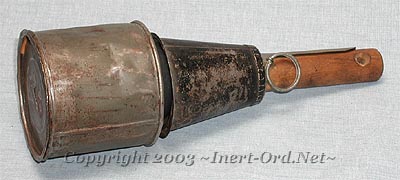
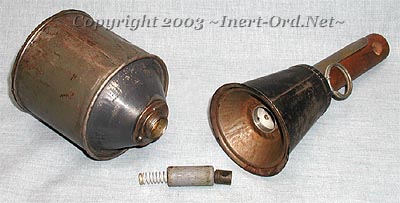
|
Ruchnaya Protivotankovaya Granata ("Hand Anti-Tank Grenade") Model 1943 This was Russia's first shaped charge grenade for anti-tank purposes. It replaced the RPG-40 which was an ordinary stick grenade with an oversized high explosive head. It has an impact fuze with a 95mm diameter warhead containing 612g of TNT which could penetrate 75mm of armor. |
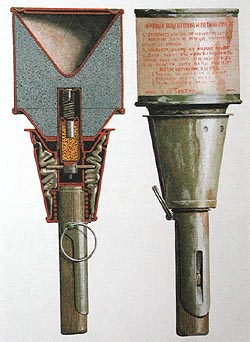
Illustrations from:
The Military History of World War II Barrie Pitt - 1986 |
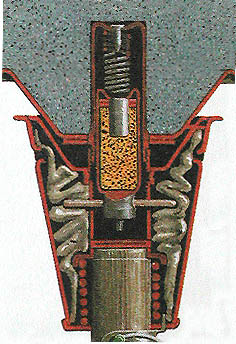
|
For those not familiar with the term "H.E.A.T." (High Explosive Anti-Tank), it pertains to the explosive charge configuration. This type is also referred to as a shaped or hollow charge device.
In simple terms, the conical shape of the explosive creates a 'focused' detonation consisting of an extremely high energy jet of gas and molten metal, (the forward metal cone liner is critical to this process), punching through the target like a hot knife through butter. The same charge in solid form would have much less penetrating power, as the blast would be spread out over a large area.
Impact velocity is of no importance to the explosive performance, which makes the shaped charge ideal for hand or rifle grenade use.
As with all hollow charge devices, it is most effective when it expoldes perpendicular (nose first) to the target. The fabric tail provides the directional control to keep it pointed in the right direction.
It turns out that optimum performance is achieved when detonation occurs just off the target surface at approximately a distance equal to the diameter of the charge. (Shaped charge munitions typically have an extended hollow nose to provide the correct offset.) The Russians quickly discovered this and improved the design with the development of the RPG-6 late in the war, adopting a streamlined, compact shape with an extended hollow nose.
The RPG-43, as with many WWII era Russian weapons, continued its career as a military munition long after. (It was used by the Egyptians against the Israelis in the 1973 war and is still encountered in small numbers.) Although it is awkward to handle and inaccurate to throw its simple manufacture no doubt contributed to its long service career.
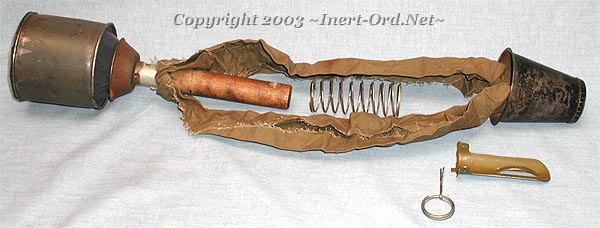
The cylindrical sheet metal body has a spring deployed cloth stabilizer with a
conical sheet metal cover and a wooded handle. Painted olive green with white
paper instructions.
The most practical application would be to throw it high over a tank so that it will drop and strike the top of the turret or the engine compartment. Dropping it from a roof top would be another application.
The most practical application would be to throw it high over a tank so that it will drop and strike the top of the turret or the engine compartment. Dropping it from a roof top would be another application.
This was presented as a WWII vintage Russian grenade, purchased from a Russian museum near Starya Russa. One of two in a WWII display. It is un-marked.